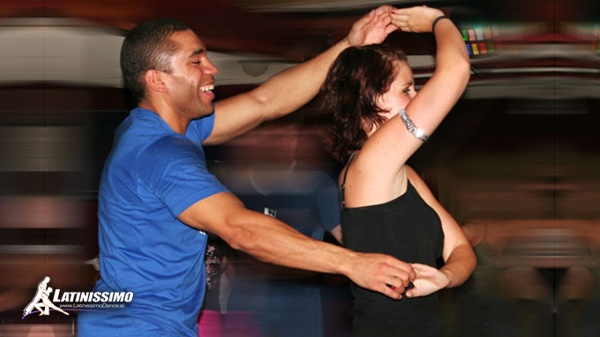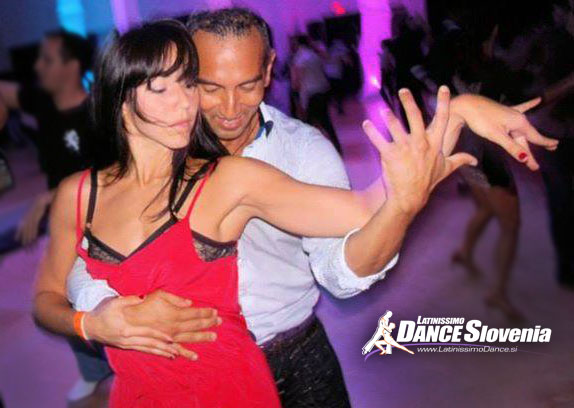
Salsa is the most popular of all Latin dances! Its the perfect way to get fit, meet a whole bunch of new people, gain confidence, de-stress, all while having lots of fun!
Salsa dancing has a huge social appeal. There is a salsa social/party or event on most days of the week for you to enjoy your new skill. This is the kind of exercise where fun prevails and burning calories is just the added bonus! The workout buddies are all there by default and ready to dance with you!
No partner required - no experience necessary! Our classes and courses can take you from complete Beginner through to dancing like a "Pro"! 5 levels to choose from, Beginners (level1), Beginners PLUS+ (level2), Improvers (level3), Intermed (level4), Advanced (level5).
Salsa courses are 4 or 8 weeks. However, to complete a level varies in length. Fundamental Beginners course (level 1) consist of (2) two 8 week coures. Beginners PLUS+ consists of (4) four 4 week courses, Improvers of (10) ten courses, intermediate is ongoing and so is advanced.
| Salsa "on1" Timetable | |||
| Next course | Where | Cost | Register online |
|
Salsa "on1" Level 1 |
Plesno Mesto Mercator Centre Šiška |
8wk course Pre-register €70 OR €80 @ door |
REGISTER HERE |
| Salsa "on1" Level 4 TBC |
Plesno Mesto Mercator Centre Šiška |
8wk course Pre-register €70 OR €80 @ door |
REGISTER HERE |
|
Salsa "on1" Level 2 |
Plesno Mesto Mercator Centre Šiška |
8wk course Pre-register €70 OR €80 @ door |
REGISTER HERE |
|
Salsa "on1" Level 3 |
Plesno Mesto Mercator Centre Šiška |
8wk course Pre-register €70 OR €80 @ door |
REGISTER HERE |
|
Salsa "on1" Level 5 |
Plesno Mesto Mercator Centre Šiška |
8wk course Pre-register €70 OR €80 @ door |
REGISTER HERE |
History
The modernization of the Mambo in the 1950s was influential in shaping what would become salsa. There is debate as to whether the dance we call Salsa today originated in Cuba or Puerto Rico. Cuba's influence in North America was diminished after Castro's revolution and the ensuing trade embargo. New York's Latino community was largely Puerto-Rican. Salsa is one of the main dances in both Cuba and Puerto Rico and is known world-wide.

Distinctive moves & characteristics
- Basic: Forward and back (from Mambo). Exectued within in an 8-count bar and stepped over 6 counts. Breaking steps on 1 and 5.
- Cross body lead: (from West Coast Swing) Where the leader opens up counter-clockwise allowing a slot for the follower to cross and change positions.
- Two-handed partnerwork: Turnpatterns are common for many dance styles, however two-handed turnpatters is very characteristic for salsa.
- Bodymovement: Shoulders, hips, ribcage movement and isolations are characteristics all salsa dancers strive to master.
- Shines: Solo footwork sequences with influences from afro-cuban rumba, pachanga, tap, cha cha and more.
What is Salsa dancing?
The word "Salsa" means something different to everyone. It is a term that encompasses a number of different things such as Latin dancing, the music, the culture, the style and flair, etc. Salsa is very cross-cultural and has to be respected. Although many countries around the world listen to the same salsa music, everyone dances it differently. In some Latin American countries, people interpret the music in their own particular way and dance salsa using their own unique blend of regional steps, styling, and turn combinations.
Salsa dancing is unique because it can absorb so many steps from all other dances. A salsa dancer in Cuba may not dance the same way as a salsa dancer from Colombia or a salsa dancer from Mexico or New York, Los Angles or -Italy! Everyone dances to the same music, but they might not use the same steps! Different salsa dance styles have developed due to this and you will hear people talking about "LA style salsa on1", "NY style salsa on2", "Cuban salsa", "Colombian style salsa", "Puerto Rican style salsa" or even "London style salsa".
There is no "correct" text-book method on how to dance social salsa. What matters most is dancing to the rhythm of the music. Despite the differences in style, all who dance salsa obey the underlying 8-beat rhythm. For competition style salsa, each competition will have their own guide lines on what style of salsa is allowed. Having said that, at Latinissimo we have created the most structured and most comprehensive salsa curriculum we have ever come across. Our instructors follow this curriculum to make you the best salsa dancer you can be!
At LDS we teach the two linear styles - Salsa "on1" and Salsa "on2".
1 The first being the Mambo era in the 50's and 60's due to the influx of Caribbean immigrants - mainly from Cuba (pre/post Cuban revolution) in New York.
This era is known as the "Palladium Era". At the time, the music was called "Mambo", therefor the dance was Mambo too. Puerto Rican dancer Pedro Aguilar aka "Cuban Pete" was the most famous dancer at the time.2 The second being in the 1970's as Puerto Rican migrants contributed heavily to the New York Salsa development.
This era was know as the "NuYorikan Era" with musicians such as Hector Lavoe, Ray Baretto and many more. The term "Salsa" was born in 1971 at the Cheetah Club. New York dancer Eddie Torres popularised the mambo calling it "Salsa Nightclub style". Today known as "Salsa on2".